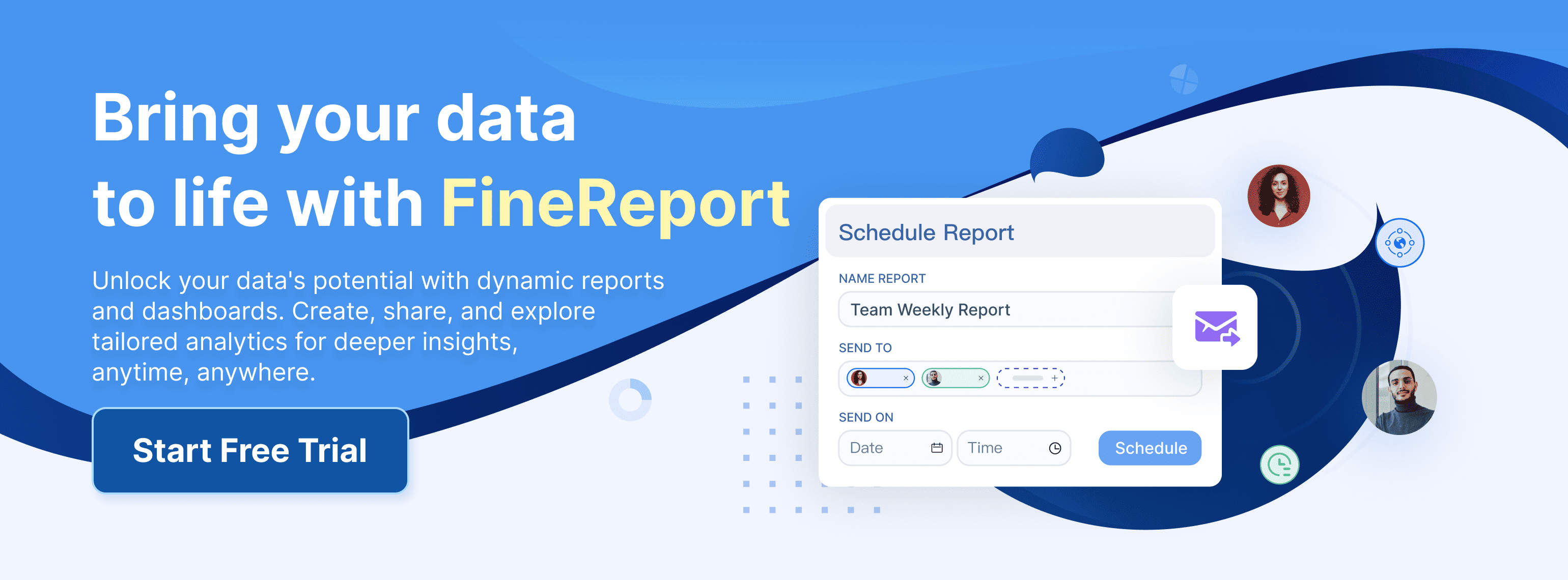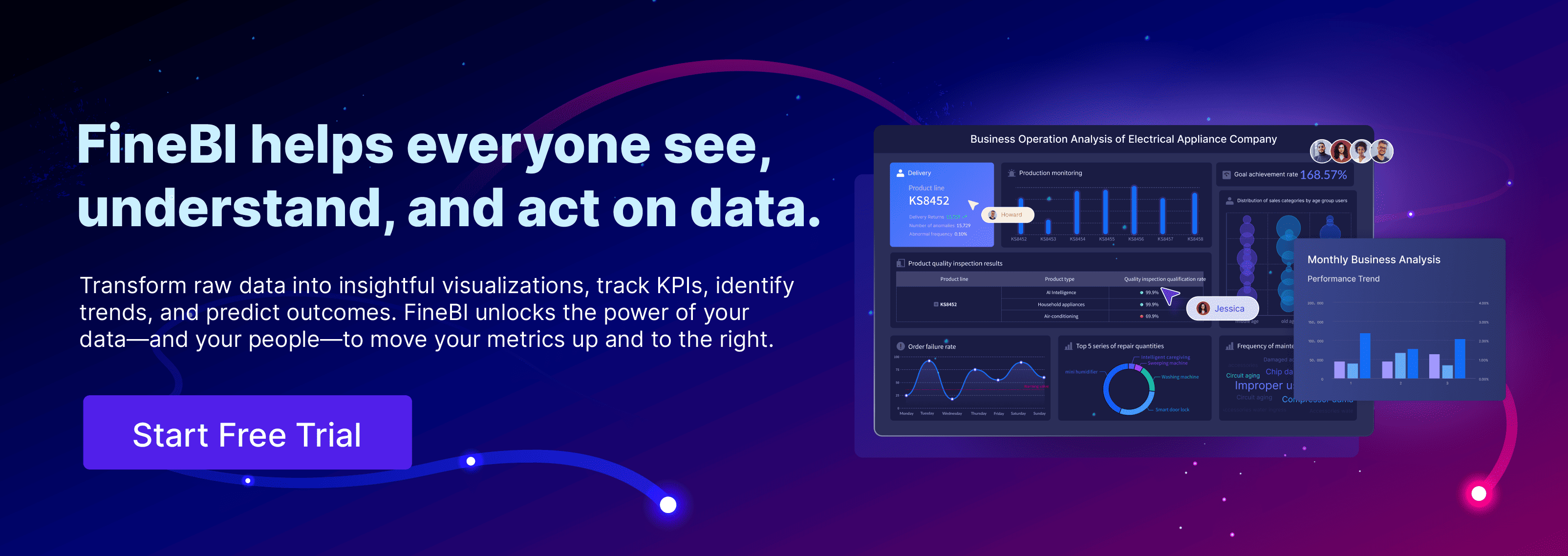Choosing the best hr analytics software can transform how you manage your workforce. HR analytics tools give you data-driven insights that help you hire better, keep employees engaged, and plan for future needs.
- These tools bring together information from surveys, performance records, and training data.
- Predictive analytics in hr analytics lets you forecast turnover and skill gaps.
- Real-time analytics helps you adapt quickly to changes.
- You can measure engagement and improve learning programs with these solutions.
Statistical studies show that data-driven HR practices lead to better hiring, faster decisions, and closer alignment with business goals in Malaysia. As you explore different tools, consider your unique HR challenges and what you want to achieve.
Every demo in this article was designed using FineBI. Ready to unlock smarter insights? Click below to start your free FineBI trial and see what’s possible!
Best HR Analytics Software
Quick Comparison Table
You want to choose the best hr analytics software for your organization. The table below compares the top 10 workforce analytics software and people analytics platforms for 2025. Each solution offers unique strengths, from advanced visualization to predictive analytics and seamless integration.
| Software | Key Features | Best For | Differentiator |
|---|---|---|---|
| FineReport | Custom dashboards, pixel-perfect reports, data integration, mobile BI | Enterprise HR analytics, reporting | Flexible report designer, real-time data |
| FineBI | Self-service analytics, AI-driven insights, drag-and-drop dashboards | People analytics, HR self-service | Zero-code, advanced data governance |
| Visier | Predictive analytics, workforce planning, diversity insights | Strategic workforce analytics | AI-powered workforce planning |
| Crunchr | Employee engagement, retention, talent management | HR teams, engagement analysis | Intuitive dashboards, retention focus |
| ChartHop | Org charts, headcount planning, compensation analytics | People analytics, org design | Visual org mapping |
| ADP Workforce Now | Payroll, compliance, advanced reporting | Payroll + HR analytics | Integrated payroll and analytics |
| BambooHR | Employee records, onboarding, performance tracking | SMBs, HR management | User-friendly, onboarding focus |
| Rippling | HR, IT, workforce analytics, automation | Integrated HR + IT management | Unified platform |
| Culture Amp | Engagement surveys, feedback, performance | Employee engagement, feedback | Science-backed engagement analytics |
| Qualtrics | Experience management, sentiment analysis | Employee experience, surveys | Advanced feedback analytics |
Tip: When you compare workforce analytics software, look for customizable dashboards, predictive analytics, and integration with your existing HR systems.
Key Takeaways
You have many options when it comes to hr analytics tools. Some focus on people analytics, helping you understand engagement and retention. Others excel at workforce analytics software, offering predictive insights and advanced visualization. FineReport and FineBI stand out for their flexible reporting, self-service analytics, and seamless data integration. These tools help you track key HR metrics like employee engagement, talent acquisition, and performance management.
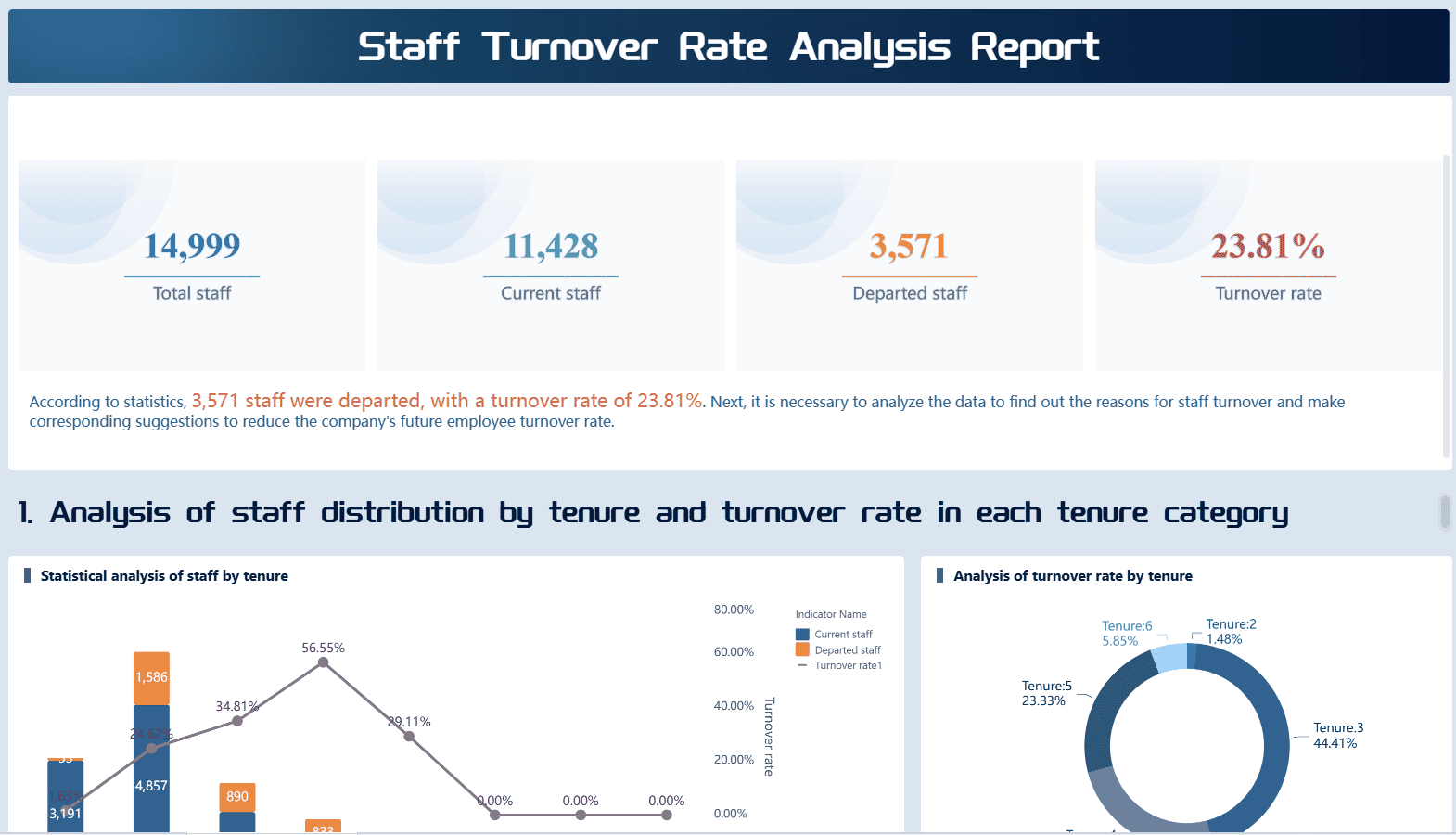
With the right software, you can measure training effectiveness, analyze retention, and optimize workforce planning. Top hr analytics tools provide customizable dashboards, intuitive interfaces, and strong support. You gain the ability to spot trends, reduce turnover, and align HR strategies with business goals in Malaysia. Data-driven decisions become easier, and you can plan for future talent needs with confidence.
Note: Organizations using evidence-based HR analytics see higher productivity, reduced attrition, and better alignment with strategic goals. The best hr analytics software empowers you to make smarter, faster workforce decisions.
What Is HR Analytics?
Definition and Core Concepts

You may hear terms like people analytics, workforce analytics, or talent analytics in HR discussions. These all refer to the practice of using data and technology to improve how you manage your workforce. HR analytics stands out as the most common term, describing a data-driven approach that uses statistical tools to collect, process, and interpret workforce data for strategic decision-making.
The Society for Human Resource Management (SHRM) published a comprehensive guide that helped define this field. HR analytics has evolved with advances in cloud computing, AI, and machine learning. Now, you can integrate data from performance management systems, employee surveys, and other sources. This evolution means you can analyze trends, predict outcomes, and align HR strategies with business goals in Malaysia.
The Center for Evidence-Based Management recommends combining scientific research, organizational data, practitioner expertise, and stakeholder values. This approach ensures your analytics deliver practical and reliable insights.
You can find structured learning paths and certifications in people analytics from platforms like AIHR. These resources help you build the skills needed to turn workforce data into actionable strategies.
Why HR Analytics Matters
You need analytics to make better decisions about your people. People analytics empowers you to move beyond gut feelings and use real evidence to guide your HR strategy. When you use analytics, you can identify patterns in workforce data, measure engagement, and predict turnover.
Recent studies show a strong link between HR analytics and organizational performance. For example, companies that use analytics see higher productivity and better alignment with business goals in Malaysia. One case study from Inditex showed that focusing on workforce analytics led to improved store performance. Another example from Bank of America demonstrated that analyzing employee interactions could predict productivity.
| Evidence Type | Description | Example / Data |
|---|---|---|
| Correlation Coefficients | Positive relationship between HR technology, analytics, and performance. | r = 0.66, p < 0.01 |
| Path Coefficients | HR technology impacts analytics and performance. | β = 0.71, p < 0.001 |
| Case Study: Inditex | Workforce analytics improved decision-making and store outcomes. | Practical application |
| Case Study: Bank of America | Analytics of employee interactions predicted productivity. | Significant prediction |
You can use people analytics to support digital transformation, personalize HR solutions, and adapt to remote or hybrid work models. As the field grows, you will see more AI and automation in HR processes. By embracing analytics, you ensure your organization stays competitive and responsive to change.
Top HR Analytics Tools Reviewed
FanRuan FineReport
FineReport gives you a powerful platform for HR analytics and reporting. You can create custom dashboards, pixel-perfect reports, and interactive visualizations without coding. The software connects to over 500 data sources, including databases, spreadsheets, and cloud platforms. You can automate report generation and distribution, making it easy to keep your HR team in Malaysia and leadership updated with the latest insights.
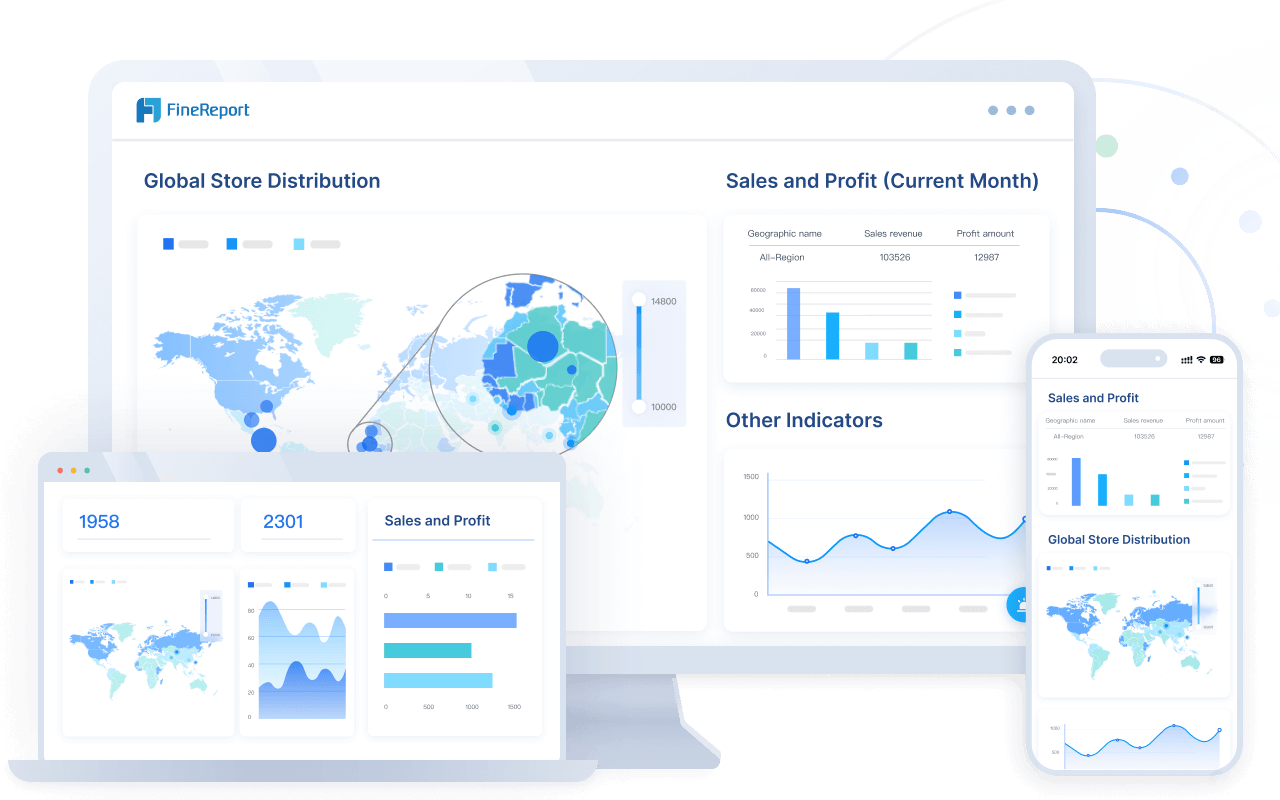
Key features include a flexible report designer, real-time data integration, and mobile BI access. You can use drag-and-drop tools to build complex reports or dashboards. FineReport supports advanced data entry, approval workflows, and permission management, which helps you control access to sensitive HR data. The decision-making platform centralizes all your analytics, making it easy to manage users and data security.
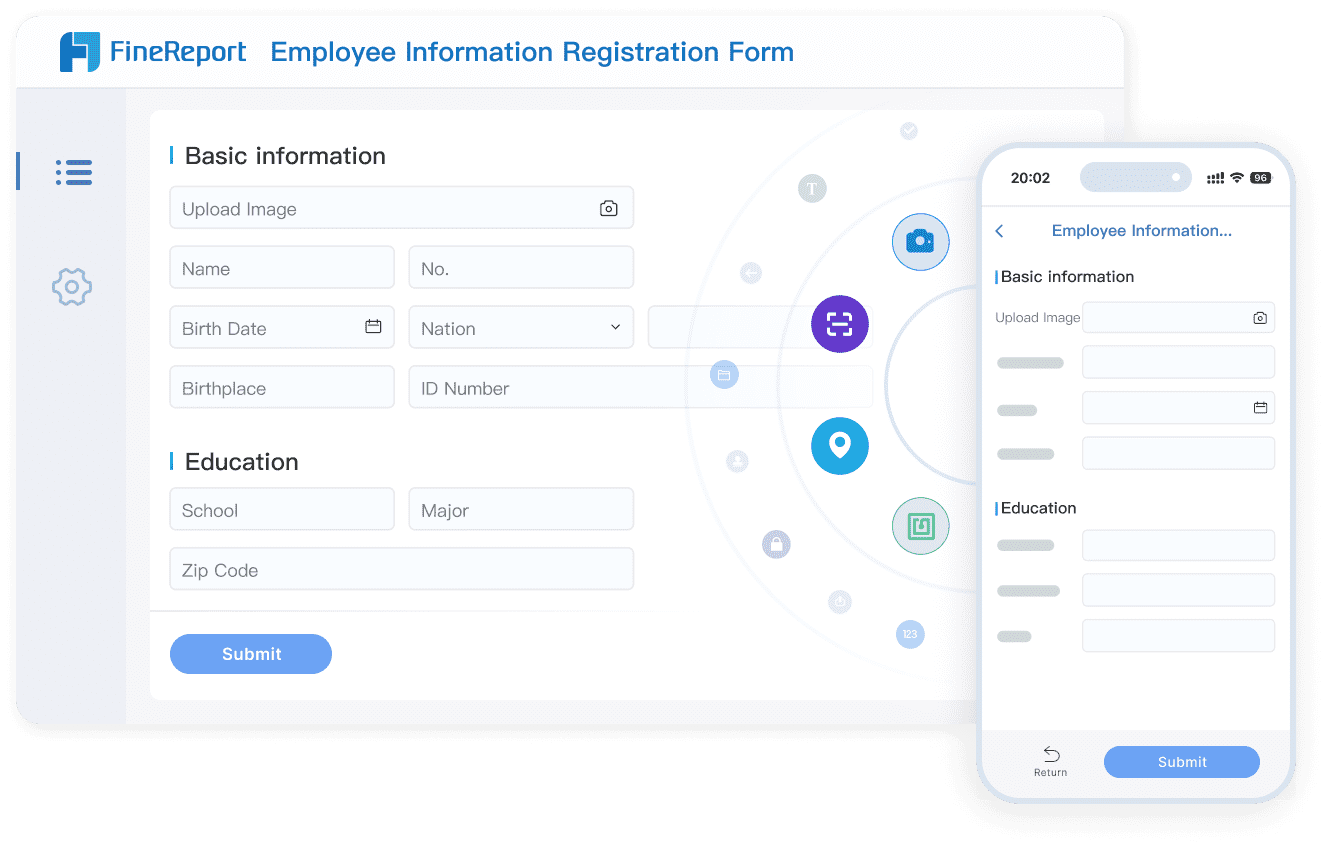
You benefit from FineReport if you need enterprise-level HR analytics, especially when your organization handles large volumes of workforce data. The software works well for HR teams in Malaysia that want to automate reporting, track key metrics like turnover and engagement, and visualize trends across departments. FineReport stands out for its seamless data integration and robust visualization capabilities, making it a top choice for HR management software.
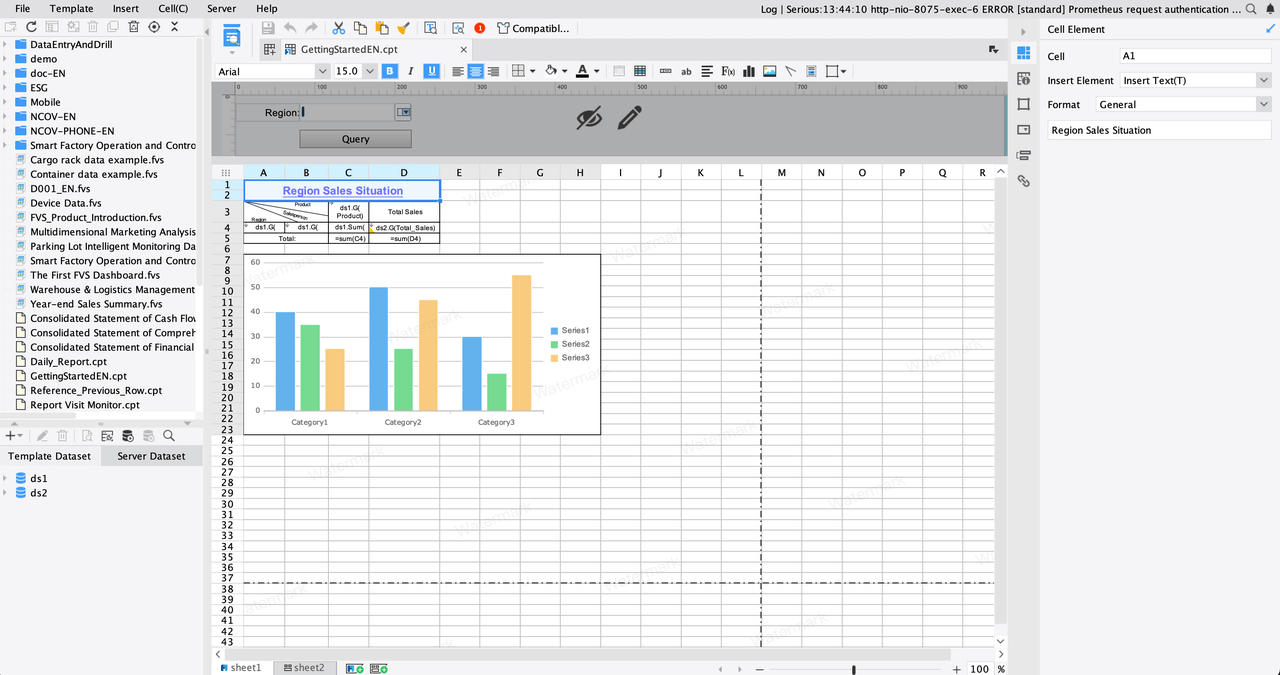
Tip: FineReport helps you move from manual spreadsheets to automated, real-time analytics, saving time and reducing errors in HR processes.
FanRuan FineBI
FineBI empowers you to perform self-service analytics and explore HR data independently. The platform offers an intuitive drag-and-drop interface, allowing you to build dashboards and analyze workforce trends without IT support. FineBI connects to a wide range of data sources, including big data platforms, relational databases, and Excel files. You can unify data from multiple HR systems for comprehensive analysis.
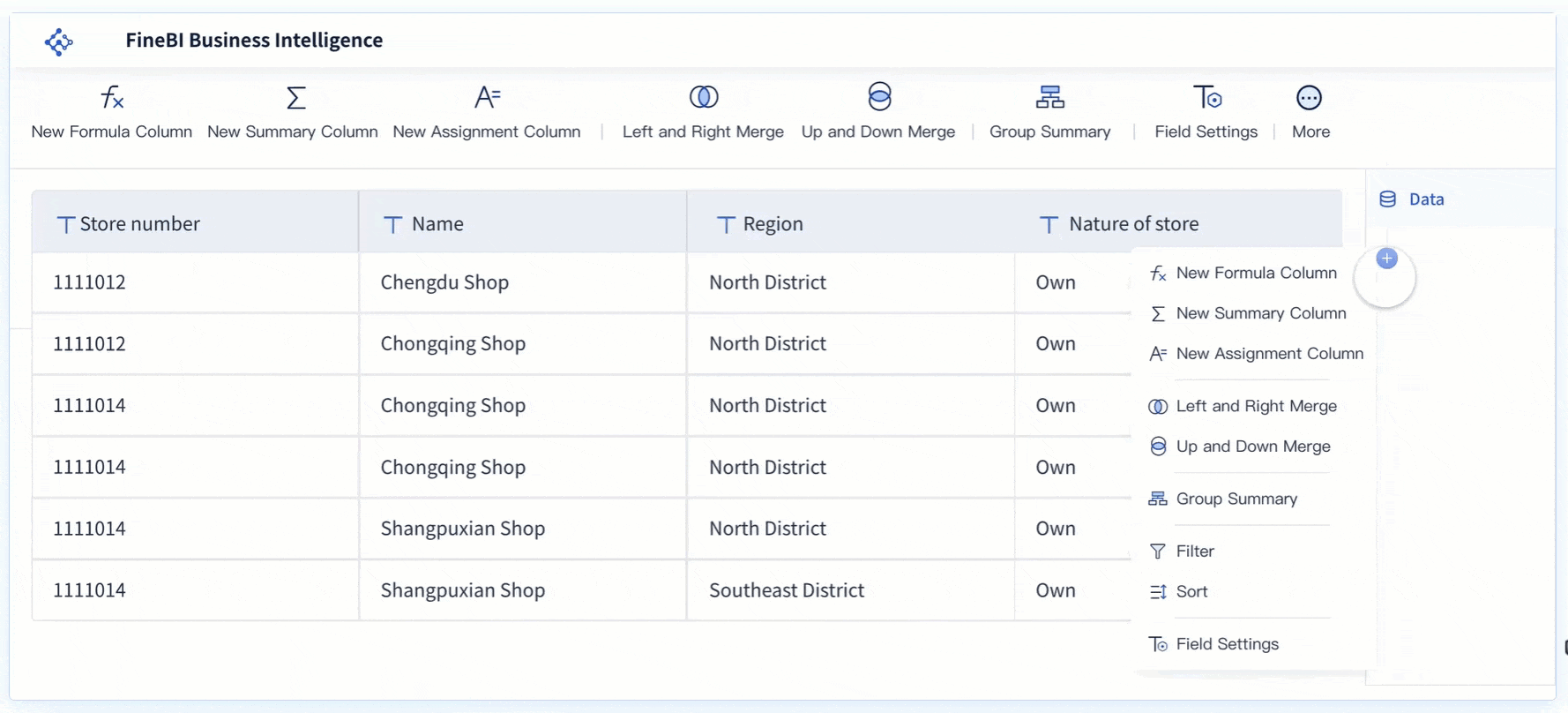
The software features AI-driven insights, real-time filtering, and advanced data governance. You can use predictive analytics to forecast turnover, identify skill gaps, and monitor employee engagement. FineBI supports role-based access control, ensuring that only authorized users can view sensitive HR information. The platform also includes collaborative features, so teams in Malaysia can share dashboards and insights securely.
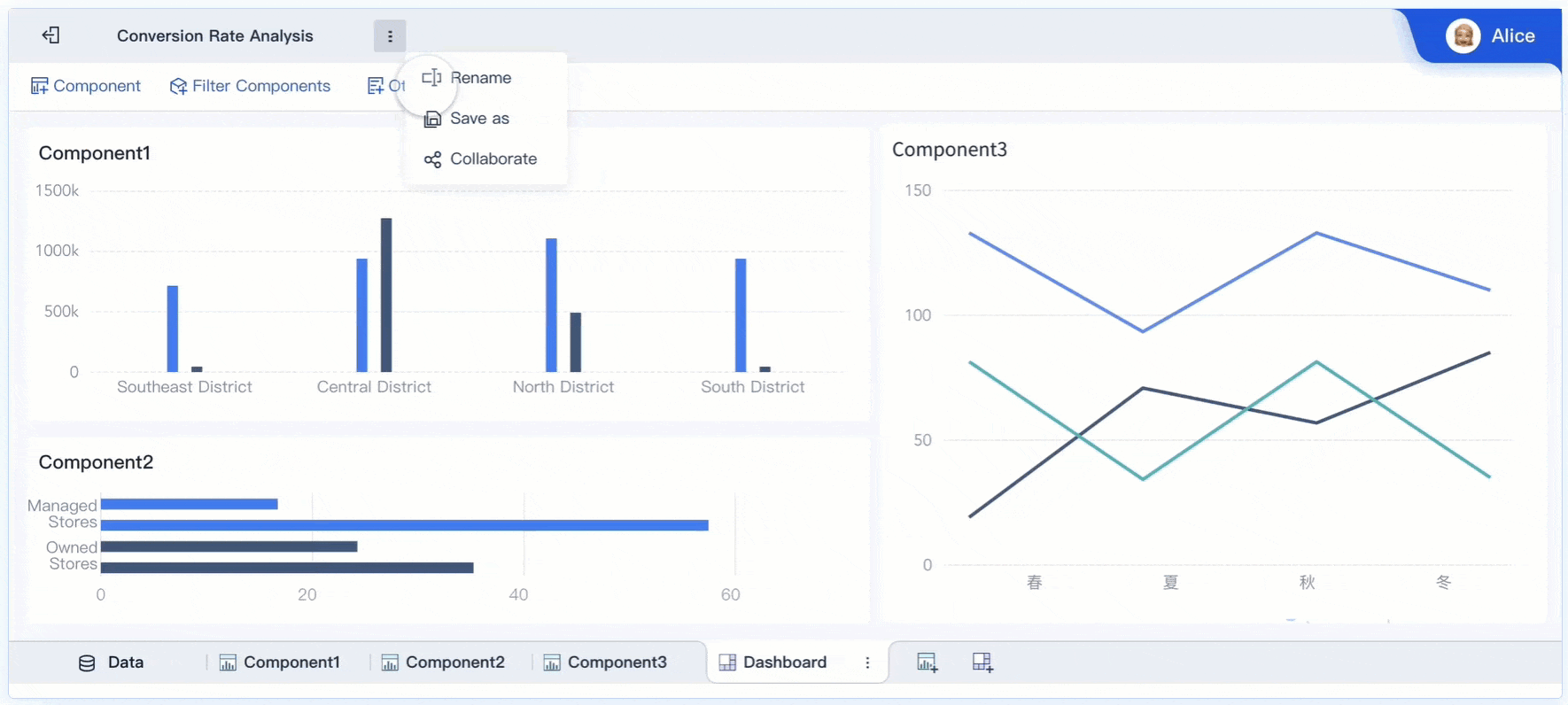
FineBI is ideal for HR teams in Malaysia that want to democratize analytics and enable business users in Malaysia to make data-driven decisions. You can quickly identify trends, track KPIs, and respond to workforce changes in real time. FineBI’s strengths in self-service analytics and seamless data integration make it a valuable tool for organizations seeking agility and precision in HR analytics.
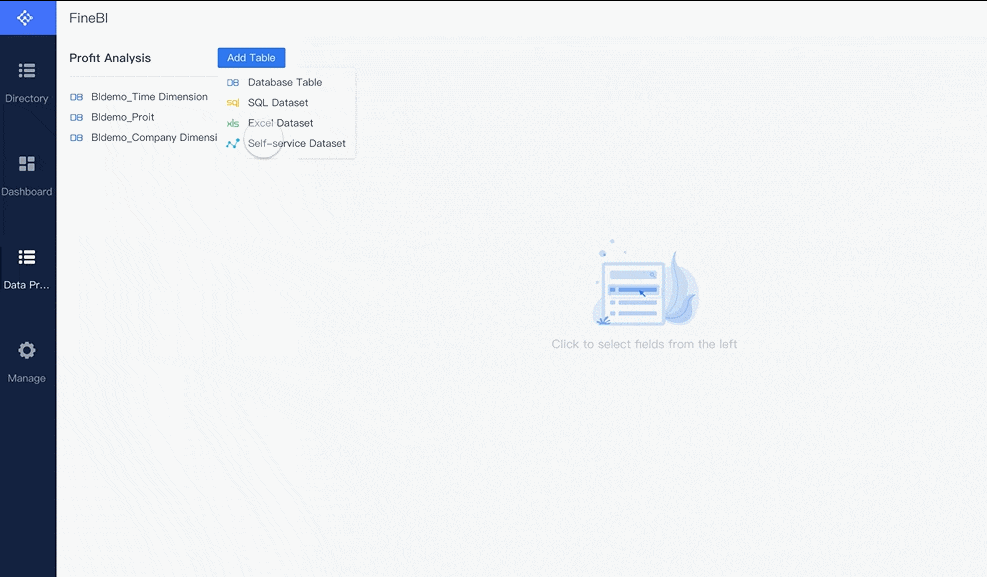
Note: FineBI’s zero-code approach and advanced analytics help you reduce time-to-insight by up to 70%, making your HR analytics more efficient and actionable.
Visier
Visier delivers a comprehensive workforce analytics platform trusted by major companies worldwide. You can leverage its predictive analytics, benchmarking tools, and intuitive interface to gain deep insights into your workforce. The software integrates data from multiple HR systems, providing a unified view for strategic planning.
Users rate Visier 4.5 out of 5, reflecting high satisfaction with its robust analytics and scalability. Experts praise its ability to handle complex data integration and deliver actionable insights for HR leaders. You can use Visier to forecast turnover, analyze diversity, and optimize workforce planning.
Visier suits organizations that require advanced analytics and predictive modeling for large-scale HR operations. Its strengths in data integration and intuitive design make it a preferred choice for enterprises aiming to align HR strategies with business goals in Malaysia.
Crunchr
Crunchr focuses on employee engagement, retention, and talent management analytics. You can use its intuitive dashboards to monitor workforce trends, identify risk factors, and develop targeted retention strategies. The software aggregates data from various HR sources, making it easy to analyze engagement and performance metrics.
Key features include real-time analytics, customizable dashboards, and automated reporting. Crunchr helps you visualize turnover rates, track employee sentiment, and benchmark against industry standards. The platform’s user-friendly design allows HR teams in Malaysia to explore data without technical expertise.
Crunchr works best for HR teams in Malaysia that prioritize engagement and retention. You can quickly identify areas for improvement and implement data-driven initiatives to boost employee satisfaction and reduce turnover.
ChartHop
ChartHop offers a visual approach to HR analytics, combining org charts, headcount planning, and compensation analytics in one platform. You can map your organization, analyze workforce composition, and plan for future growth. The software integrates 360-degree feedback with analytics to detect potential biases in performance evaluations by race and gender. It connects feedback to actionable plans, such as accountability partnerships and training suggestions, ensuring that review data leads to meaningful HR decisions.
ChartHop supports collecting and analyzing key HR metrics like engagement, promotion, retention, and turnover rates. You can run employee feedback surveys to assess manager effectiveness and identify issues such as micromanagement or disengagement among specific groups. The platform enables you to track employee Net Promoter Score (eNPS) trends over time, segmented by demographics, helping you address workplace equity and engagement.
Amie Taylor, a senior People leader, endorses ChartHop as a highly configurable HR solution that empowers organizations to implement creative and tailored strategies. ChartHop is ideal for organizations seeking a flexible, visual, and data-driven approach to HR analytics.
ADP Workforce Now
ADP Workforce Now combines payroll, compliance, and advanced HR analytics in a single platform. You can automate HR processes, generate detailed reports, and ensure data accuracy across your organization. The software’s API Central enables seamless integration with other business systems in Malaysia, reducing manual work and improving data quality.
The Forrester Total Economic Impact™ study quantifies the benefits of ADP Workforce Now for a composite organization with 1,500 employees and $400 million annual revenue:
| Benefit Category | Year 1 Savings | Year 2 Savings | Year 3 Savings | Total Savings | Present Value |
|---|---|---|---|---|---|
| Time savings on custom integration projects | $40,824 | $27,216 | $13,608 | $81,648 | $69,829 |
| HR time savings on onboarding/offboarding | $29,644 | $39,525 | $49,406 | $118,575 | $96,734 |
| Time savings from automating HR reporting/errors | $32,141 | $32,141 | $32,141 | $96,422 | $79,929 |
| Total risk-adjusted benefits | $102,609 | $98,882 | $95,155 | $296,645 | $246,492 |
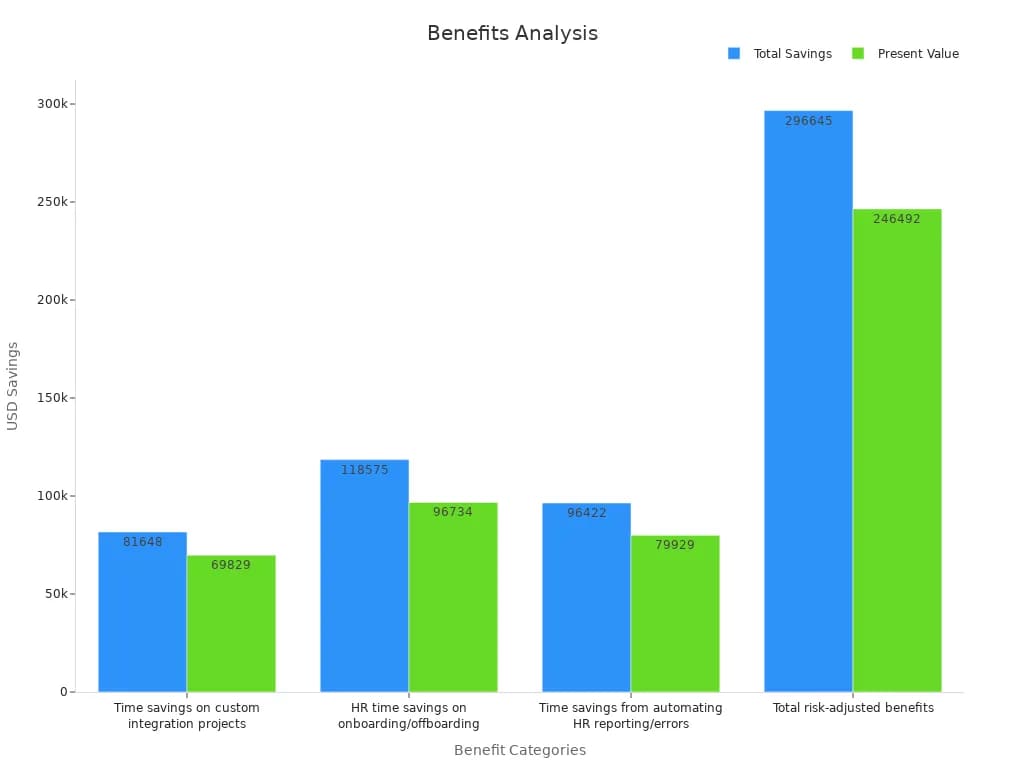
You benefit from ADP Workforce Now if you need to streamline HR data management, automate reporting, and improve compliance. The software is well-suited for organizations that want measurable cost and time efficiencies in HR operations.
BambooHR
BambooHR provides a user-friendly platform for HR management and analytics. You can organize employee records, track onboarding, and monitor performance with ease. The software integrates multiple HR functions into a single system, simplifying data management and reporting.
- BambooHR Benchmarks gives you AI-powered peer group comparisons and real-time anonymized data from millions of employees.
- The platform tracks HR metrics such as turnover types, employee Net Promoter Score (eNPS), wellness, diversity, age, gender, and years of service.
- You can identify trends and actionable insights through customizable peer benchmarking by industry, company size, and location.
- BambooHR updates its data daily and ensures security through anonymization.
- The platform’s integration of HR functions supports strategic decision-making.
BambooHR is best for small and medium-sized businesses in Malaysia that want a simple, effective way to manage HR data and gain insights into workforce trends.
Rippling
Rippling unifies HR, IT, and workforce analytics in a single platform. You can automate HR processes, manage payroll, and analyze workforce data without switching between systems.
- Rippling integrates HR and payroll, eliminating duplicate data entry and missed updates.
- Automated compliance updates and tax filings reduce manual intervention.
- Employee self-service dashboards improve transparency and reduce HR workload.
- The platform integrates multiple HR and finance applications, creating a unified source of truth.
- Automated workflows replace manual tasks, including reminders and custom task lists.
- Integration covers recruiting, onboarding, benefits, performance management, payroll, and offboarding.
Rippling is ideal for organizations seeking scalable, accurate, and efficient HR and payroll processes. The software’s automation and integration enhance analytics reporting and improve HR efficiency.
Culture Amp
Culture Amp specializes in employee engagement, feedback, and analytics. You can gather continuous feedback, run pulse surveys, and analyze engagement data in real time. The platform integrates people science with analytics, giving you a holistic view of employee behavior and sentiment.
The Forrester Total Economic Impact™ study estimates risk-adjusted total benefits over three years exceeding $3 million in present value for a composite organization with 3,000 employees and $500 million in annual revenue:
| Benefit | Year 1 ($) | Year 2 ($) | Year 3 ($) | Total ($) | Present Value ($) |
|---|---|---|---|---|---|
| Increased profitability | 200,000 | 400,000 | 600,000 | 1,200,000 | 963,186 |
| Reduced attrition costs | 494,304 | 494,304 | 494,304 | 1,482,912 | 1,229,261 |
| Increased productivity of managers | 263,250 | 263,250 | 263,250 | 789,750 | 654,664 |
| Increased productivity of HR team | 76,680 | 76,680 | 76,680 | 230,040 | 190,692 |
| Total benefits (risk-adjusted) | 1,034,234 | 1,234,234 | 1,434,234 | 3,702,702 | 3,037,803 |
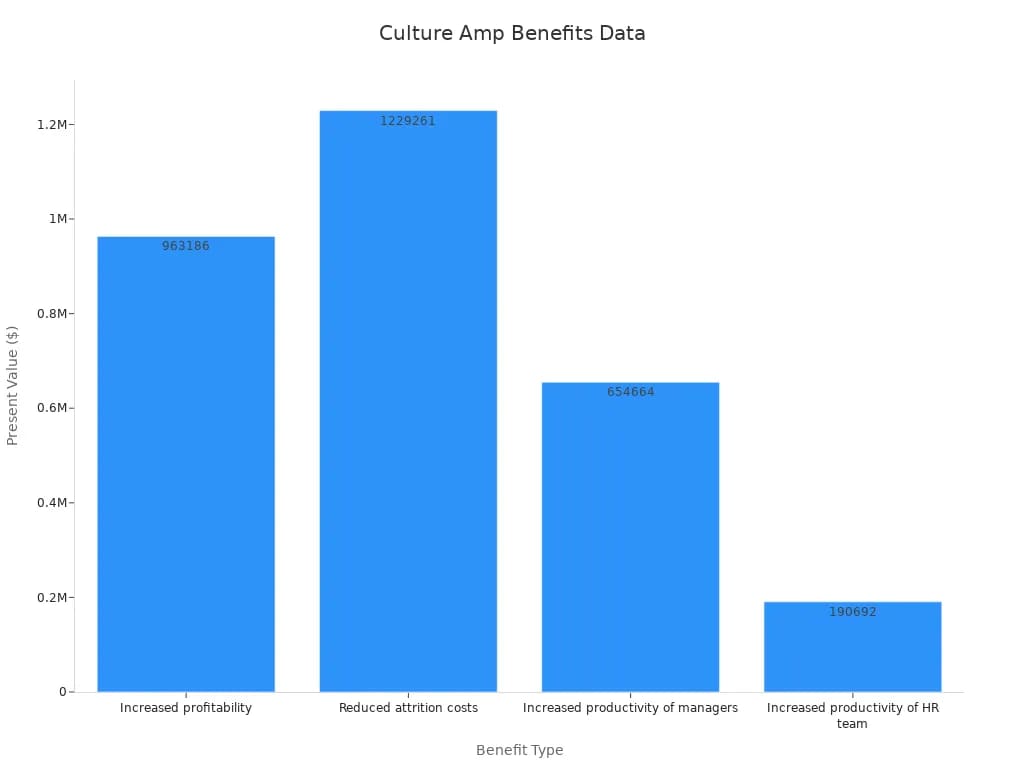
User interviews highlight Culture Amp’s ability to provide strategic insights, support leadership development, and strengthen DEI initiatives. The platform enables continuous listening, real-time analytics, and actionable feedback, making it a leader in employee experience management.
- Culture Amp offers comprehensive feedback mechanisms, including regular and pulse surveys.
- The platform provides actionable insights and real-time data access.
- Integration with HR systems streamlines data management.
- Personalized learning plans and goal tracking support employee development.
Culture Amp is best for organizations that want to enhance engagement, reduce attrition, and drive organizational performance through advanced analytics.
Qualtrics
Qualtrics delivers a robust platform for HR analytics, employee experience, and feedback management. You can run pulse surveys, track sentiment, and analyze workforce trends in real time. The software supports predictive modeling to forecast turnover and engagement, enabling proactive retention strategies.
- Pulse surveys and real-time analytics gauge employee sentiment and satisfaction.
- Feedback mechanisms identify disengagement and facilitate two-way communication.
- Demographic analytics measure diversity and uncover underrepresentation.
- Predictive modeling forecasts flight risks and supports retention.
- Sentiment tracking and benchmarking improve candidate and employee experience.
- Analytics-driven insights identify biases and inform equitable talent practices.
Qualtrics enables you to measure a wide range of HR metrics, from recruitment and performance to retention and employee experience. The platform’s analytics help you reduce turnover costs, improve engagement, and support DEI initiatives.
| Metric Category | Examples of Metrics and Survey Types |
|---|---|
| Recruitment Metrics | Time to fill open requisitions, cost per hire, number of candidates/interviews per hire |
| Workforce Performance | Worker productivity, worker quality, average performance ratings |
| Employee Retention | Absentee rate, safety incidents, voluntary vs. involuntary terminations |
| Voice of the Employee Data | Pulse surveys, 360-degree feedback, lifecycle monitoring, performance reviews, onboarding, exit interviews, candidate experience surveys |
| Customer Experience Link | Customer satisfaction, Net Promoter Score, share of wallet, customer retention, average revenue per customer |
Qualtrics is a top choice for organizations that want to link HR analytics with business outcomes in Malaysia and deliver a superior employee experience.
Key Features of Workforce Analytics Software
Data Integration
You need workforce analytics software that brings all your workforce data together. Top platforms connect to HR systems, surveys, and external reports, giving you a complete view of your organization. When you use FineReport or FineBI, you can integrate data from over 500 sources, including databases and spreadsheets. This unified approach increases the accuracy of your talent decisions by more than double, according to Deloitte. Seamless data integration also supports benchmarking and industry comparisons, helping you make smarter choices.
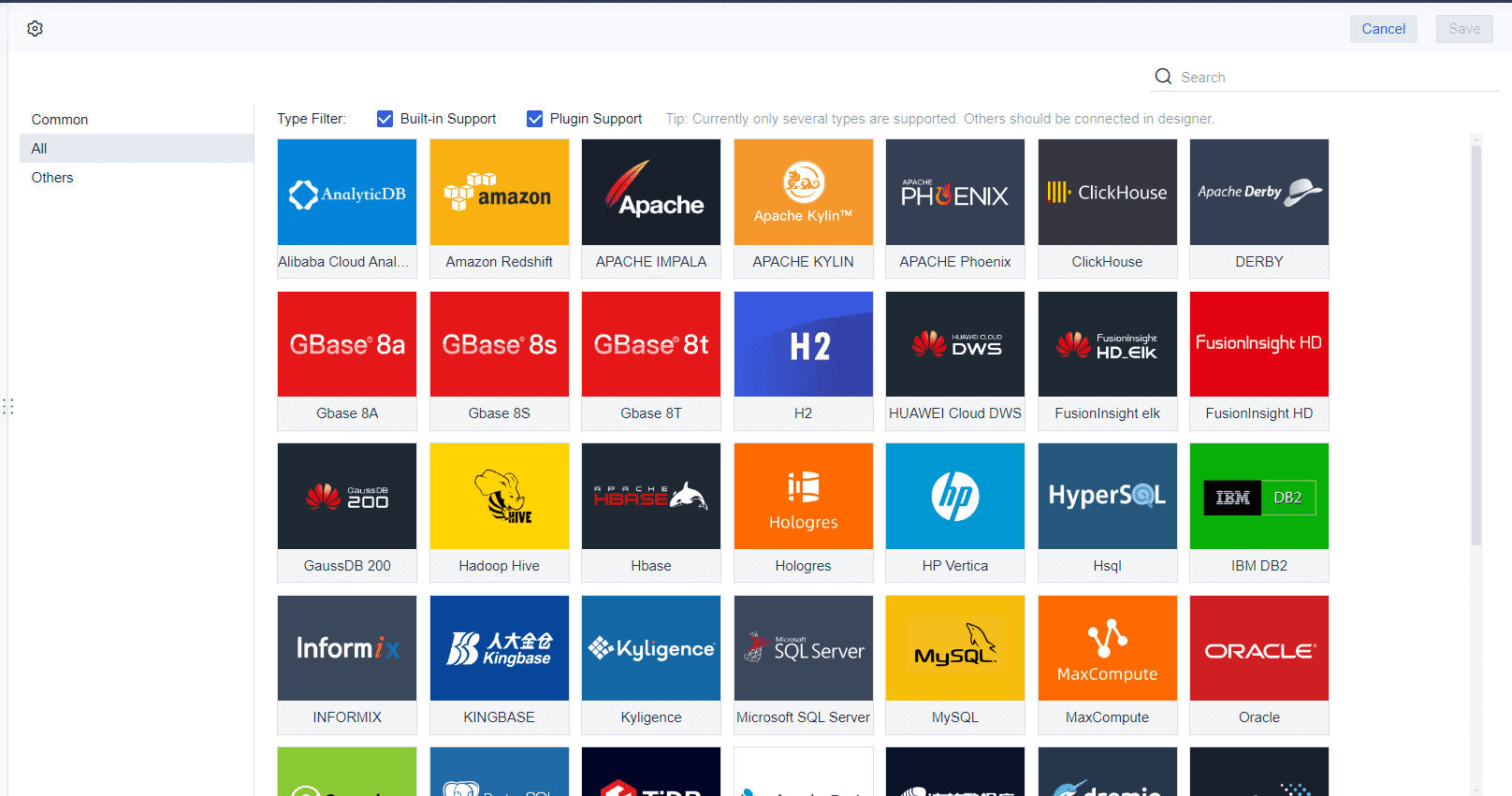
Analytics and Reporting
Advanced analytics and reporting features help you turn workforce data into actionable insights. With workforce analytics software, you can monitor data in real time, detect anomalies, and forecast trends. FineBI offers AI-driven dashboards and predictive analytics, letting you explore what-if scenarios and measure the impact of HR campaigns. Features like data lineage tracking and natural language narratives make it easier to understand and share findings. These tools support better decisions in areas like retention, engagement, and performance.
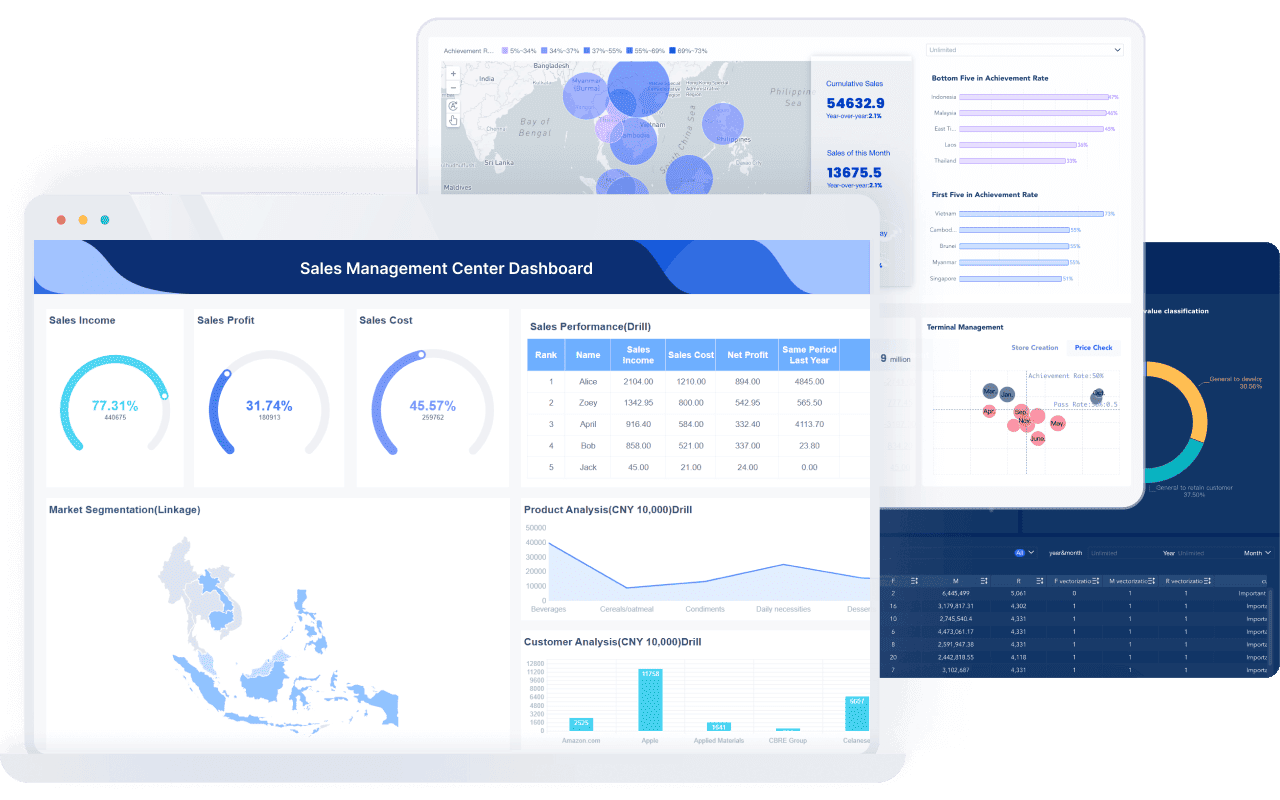
- Intelligent monitoring and cleansing spot outliers automatically.
- Predictive analytics forecast turnover and skill gaps.
- Storyboards and dashboards present data in clear, interactive ways.
User Experience in Malaysia
A user-friendly interface drives adoption and value. You want workforce analytics software that is easy to use, with customizable dashboards and clear navigation. FineBI’s drag-and-drop designer and zero-code analytics empower you to build reports without IT help in Malaysia. Studies show that intuitive design leads to higher adoption and faster ROI. When your team in Malaysia can access real-time dashboards, you make faster, more informed decisions in Malaysia.
Security and Compliance
Security and compliance are critical in workforce analytics software. You must protect sensitive workforce data with encryption, role-based access, and audit logs. FineReport and FineBI offer robust security features, including permission controls and automated data retention. Many organizations report that security is the top factor delaying analytics adoption, so strong compliance features help you move forward with confidence.
Scalability
As your organization grows, your workforce analytics software must scale with you. Look for platforms that support large data volumes, high user counts, and real-time analytics. FineBI’s high-performance engine can handle over 10,000 users and massive datasets. Reliable uptime, modular architecture, and flexible automation ensure your analytics keep pace with business needs in Malaysia. Customer feedback from large enterprises confirms the importance of scalability for long-term success in Malaysia. Here is an interactive dashoboard created by FineBI, click to experience it.
How to Choose the Best HR Analytics Software in Malaysia
Assessing Business Needs in Malaysia
Start by clarifying your HR goals and the challenges you want to solve. Define the metrics that matter most, such as turnover rates, engagement, or time-to-hire. Align your software choice with your company’s strategic objectives. Evaluate your team’s analytics skills and training needs. Consider the resources and budget available for new hr technology.
Here is a step-by-step approach to match your needs with the right solution:
- Identify your HR goals and key challenges.
- Assess your analytics capabilities and available resources.
- Prioritize data quality and integration from all sources.
- Evaluate security and compliance requirements.
- Consider user-friendliness, scalability, and cost-effectiveness.
Tip: The best fit will support your current needs and scale as your organization grows.
Evaluating Integration and Support in Malaysia
You need software that integrates smoothly with your HRIS, payroll, and management systems. High-quality integration saves time and reduces errors. Look for platforms with strong customer support and accessible training resources. This ensures everyone on your HR team in Malaysia can use the tool effectively, regardless of their technical background.
Budget and ROI
Budget plays a crucial role in your decision. Start by identifying the business problem in Malaysia you want to solve. Collect baseline data to measure improvement. Project outcomes with clear KPIs and timelines. Quantify the financial impact, such as reduced turnover or improved productivity. Align your HR initiatives with organizational goals to justify the investment.
| ROI Strategy | Description |
|---|---|
| Workforce Forecasting | Plan headcount and skills to reduce costs |
| Automation | Streamline recruiting and performance tracking |
| Engagement & Retention | Improve productivity and reduce turnover costs |
| Case Example | A tech firm cut turnover by 15% and saved 20% annually using analytics |
Implementation Tips
Successful adoption depends on clear objectives and high-quality data. Emphasize the benefits, such as better decision-making and efficiency. Foster interest by offering training and skill development. Define your analytics goals, whether for reporting, visualization, or predictive insights. Gain buy-in from all stakeholders by addressing their concerns and aligning with ongoing digital transformation.
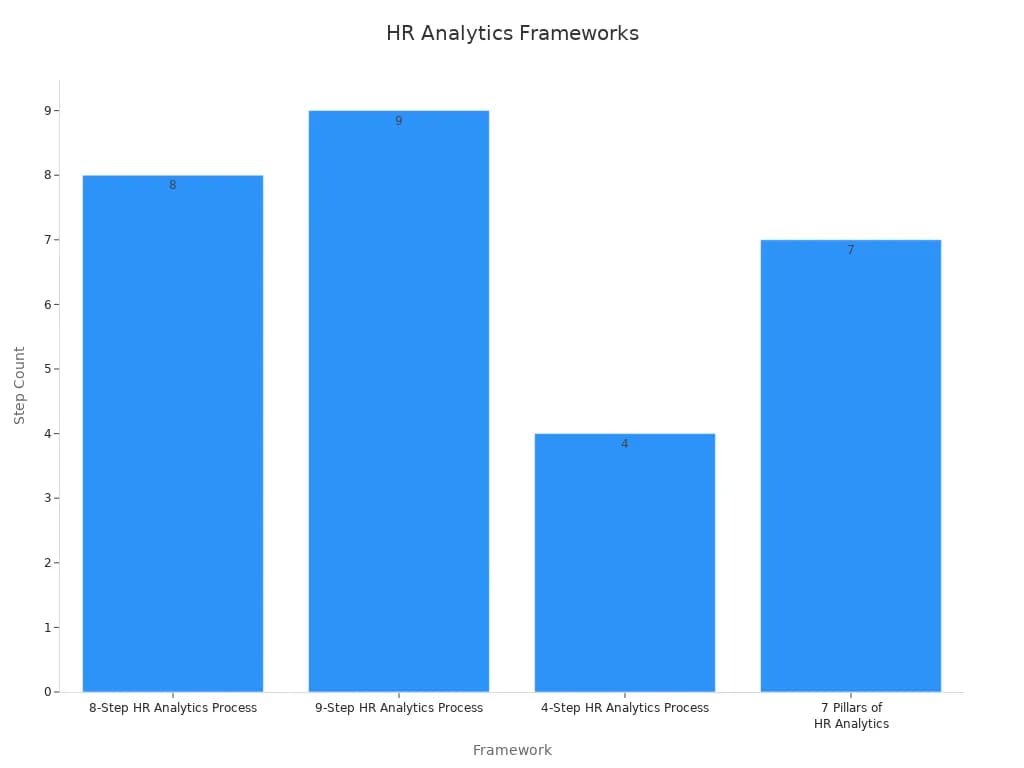
Note: Align your software choice with your workforce analytics strategy to maximize value and support long-term growth.
HR Analytics Trends in Malaysia
AI and Predictive Analytics
You see a major shift in HR analytics as organizations adopt ai-powered analytics in Malaysia. These tools help you uncover patterns in workforce trends that were once hidden. With ai-powered analytics, you can predict turnover, identify skill gaps, and plan for future hiring needs. You gain the ability to move from reactive to proactive HR management. For example, you can use predictive models to forecast which employees might leave or which teams in Malaysia need more training. This approach helps you stay ahead of workforce trends and make smarter decisions in Malaysia.
AI-powered analytics give you a competitive edge by turning complex data into clear, actionable insights in Malaysia.
Real-Time Insights
You need to respond quickly to changes in your workforce. Real-time insights let you monitor workforce trends as they happen. When you use platforms like FineBI, you see up-to-date dashboards that reflect the latest data. This means you can spot issues such as rising absenteeism or sudden drops in engagement right away. Real-time insights help you act fast, adjust your strategies, and keep your organization agile. You no longer wait for monthly reports to understand workforce trends. Instead, you get the information you need, when you need it.
Self-Service and Democratization
You empower your HR team and business leaders in Malaysia when you provide self-service analytics. Modern platforms make it easy for anyone to explore workforce trends without technical skills. You can drag and drop data, create dashboards, and share findings across departments. This democratization of analytics means more people can contribute to data-driven decisions. As a result, you see faster responses to workforce trends and better alignment with business goals in Malaysia. Self-service tools also reduce the burden on IT, letting your HR professionals focus on strategy.
HR Analytics: Develop Differentiated Operational Strategies Through User Segmentation
Modern HR analytics empowers you to create targeted strategies by segmenting users into meaningful groups. When you understand the unique needs of job seekers and employers, you can deliver more personalized experiences and drive better outcomes for your organization. Fanruan has developed a differentiated operational strategy by stratifying the users of the recruitment platform, which significantly improves efficiency and is well organized.
User Operations Based on User Segmentation — Job Seekers
Based on user capabilities
You can segment job seekers by their skills, experience, and education. For example, you might group candidates as entry-level, mid-career, or executive. This approach lets you recommend jobs that match their abilities and suggest relevant training programs. You help entry-level candidates find internships or apprenticeships. For experienced professionals, you highlight leadership roles or specialized positions.
Tip: Use HR analytics tools like FineBI to visualize skill gaps and identify which training resources will benefit each group the most.
Based on job-seeking status
Segmenting by job-seeking status helps you engage users at the right moment. You can identify active job seekers who apply frequently and passive candidates who browse but rarely apply. For active seekers, you send real-time alerts about new openings. For passive candidates, you nurture them with personalized content or employer branding messages.
- Track metrics such as application completion rates and offer acceptance.
- Use predictive analytics to forecast when passive candidates might become active.
User Operations Based on User Segmentation — Employers
Based on company type
You can group employers by industry, size, or growth stage. Large enterprises may need advanced analytics and compliance features. Startups often look for flexible solutions and fast hiring tools. By understanding these differences, you tailor your platform’s features and support to each segment.
| Company Type | Key Needs | Recommended Features |
|---|---|---|
| Enterprise | Compliance, analytics | Advanced dashboards, security |
| Startup | Speed, flexibility | Self-service tools, templates |
Based on job characteristics
Segmenting by job characteristics allows you to optimize job postings and recommendations. For example, you can distinguish between technical and non-technical roles or full-time and part-time positions. This helps you match candidates more effectively and improve hiring outcomes.
Note: HR analytics enables you to monitor which job types attract the most qualified applicants, so you can refine your sourcing strategies and boost placement rates.
Choosing the right analytics platform transforms your HR strategy. You gain measurable improvements in retention, performance, and culture by using advanced tools. FineReport and FineBI help you unify data, automate reporting, and empower your team in Malaysia with actionable insights. Review the evidence below to see the impact:
| Evidence Aspect | Description and Metrics |
|---|---|
| Employee Retention Improvement | Predictive analytics forecasts flight risks with over 80% accuracy, leading to a 10% retention improvement. |
| Performance Review Enhancement | Data-driven evaluations improved review quality by 57%. |
| Organizational Culture Alignment | Analytics improved cultural alignment by 32%. |
| Return on Investment (ROI) | A $2 million training investment guided by analytics led to a $10 million revenue increase. |
| Cost Savings and Productivity | Analytics reduced turnover costs and improved productivity. |
| Strategic Advantage | Advanced tools enabled proactive planning and continuous impact monitoring. |
- Levenson and Deloitte show analytics support better talent decisions and leadership development.
- Fitz-Enz, McIver, and Kim confirm improved planning and talent deployment.
- Stone highlights technology’s role in strategic HR decisions.
Explore demos or request a trial to find the best fit for your HR strategy.
Click the banner below to try FineReport and FineBI for free and empower your enterprise to transform data into productivity!
Continue Reading About HR Analytics
FAQ

The Author
Lewis
Senior Data Analyst at FanRuan
Related Articles

How to Build a Data Analysis Portfolio Step by Step
Build a data analysis portfolio from scratch with step-by-step guidance on choosing projects, platforms, and showcasing your skills to stand out.
Lewis
Nov 19, 2025

Understanding the Work of a Data Quality Analyst
A data quality analyst ensures data accuracy, consistency, and reliability by identifying, resolving, and monitoring data quality issues for business success.
Lewis
Nov 17, 2025
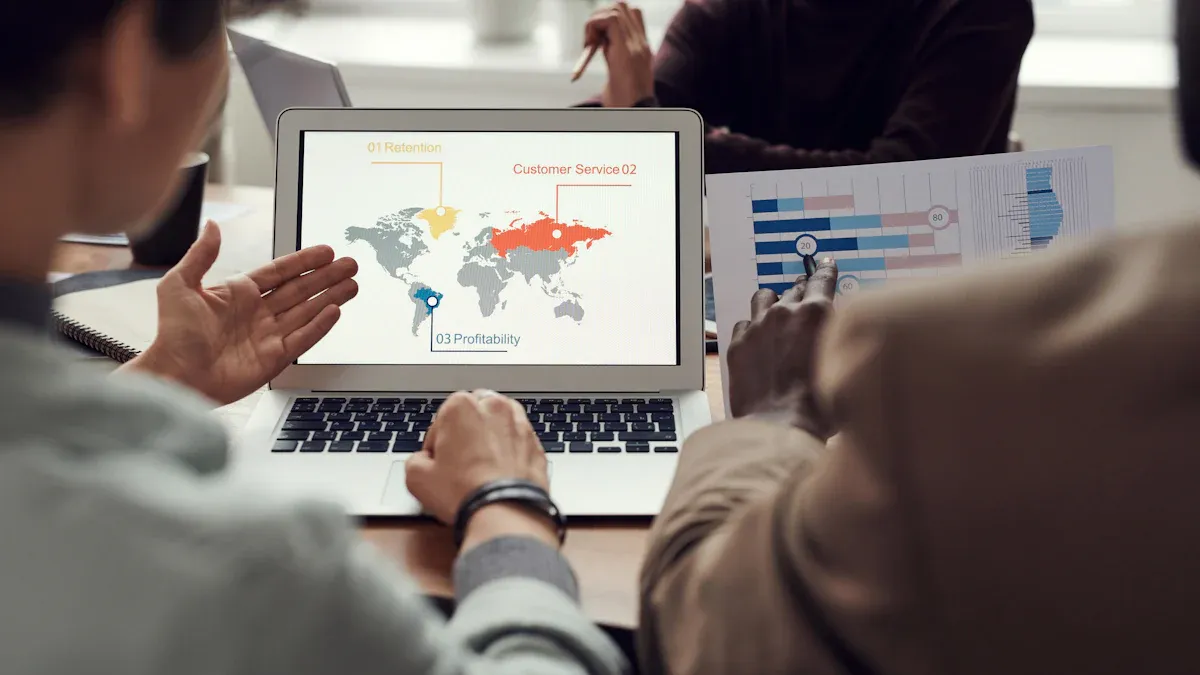
How Can Employee Retention Software Help Lower Turnover Rate
Employee retention software lowers turnover by tracking engagement, identifying risks, and supporting recognition to keep employees satisfied and loyal.
Lewis
Nov 16, 2025
